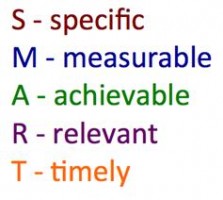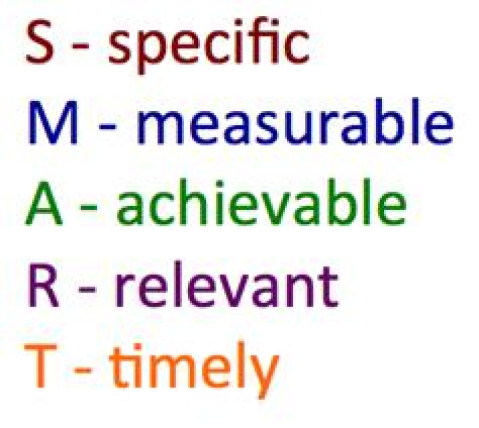Widgetized Section
Go to Admin » Appearance » Widgets » and move Gabfire Widget: Social into that MastheadOverlay zone
Engaging the Community in a Networked World
By Christine Springer
Nurturing continuous engagement of the community served by public agencies is not only important but also critical to successful public management in an environment of change.
Networking can be an important way of engagement but it must be done in an organized way. To be effective, networkers must be part of a team and have a plan. They must work to expand their network, get the most value for their time, communicate messages and success stories effectively and become the experts, drawing people to them because of positive “word-of-mouth” on the streetnet. In many ways this requires innovation, is one tool for transforming the entire culture of the organization and is part of a growing recognition that fostering a culture of innovation is critical to success.
 One way to organize and manage the approach to networking is to set goals that are specific, measurable, attainable, relevant and timed with a deadline.
One way to organize and manage the approach to networking is to set goals that are specific, measurable, attainable, relevant and timed with a deadline.
- Specific goals must be clearly defined with parameters that state who, what, when, where and how.
- Measurable goals must include a way of measuring the results by associating a number with the goal, such as what percentage of the community will be engaged, so that there is some quantifiable way to measure progress.
- Attainable goals are capable of being achieved within a specific timeframe and these goals are usually evaluated at the end of the year. To set these goals, it is important to consider what is coming up next year that could either impede or improve the ability to meet the specific goals. In addition, it is important to consider everything that needs to be done to accomplish the goal. If the team honestly feels that with hard work, dedication and focus on the goal can be met, they should write it down, commit to achieving the goal and be evaluated on their progress.
- Relevant goals must have meaning for the individuals and the organization; otherwise, no one will be motivated to accomplish them. The team and each individual involved should answer the following questions:
- What will be the outcome if we meet a particular goal?
- Will we make more money or provide services more effectively?
- Will we save time in the end?
- Timed goals must have a deadline or completion date assigned to them. Without doing so, focus will get lost as well as the desire to meet the goal in a timely way.
After putting these five elements together, there should be a goal statement that is focused on organizational outcomes and agreed upon by the individuals involved. The goal statement often includes becoming a member of or aligned with another organization that is also active in networking and a community partner (e.g. a local chamber of commerce or a regional council of governments). It can also include achieving a percentage increase in annual referral business, or in volunteers, or in community participation in events or on the webpage. In order to create a functional goal statement, organizations often need to ask and answer the following questions:
- What exactly do we want to achieve by becoming more active in online networks and by when?
- What do we need to make this happen and whom do we need to target?
- How much time do we want to spend each month on networking?
- What groups are most important to our individual and organizational success?
It is also important that the individuals involved in doing the networking understand online etiquette by learning to play by streetnet rules. In doing so, the online experience for each individual is more effective.
- First, listen. Do not just dive in deep and not pay attention to the way others comment. See how others respond to comments before making a move.
- Second, ask. If we are uncertain of what is acceptable and what is not, it is perfectly fine to ask others provided we have spent a little time in the online setting.
- Third, reciprocate. All online conversations happen on purpose because we go places purposefully. When someone becomes friends with us on a social network, unless there is a real reason not to, we should friend them back because it is both natural and the first step to opening a communications channel.
- Fourth, comment and comment back. When we are first getting started online, we begin by visiting various sites, reading blogs or setting up a Facebook or a Twitter account. However, moving ahead requires continuous interaction and communication.
- Fifth, contribute. Start with a good introduction, not just a name and a photo that shows who we are. Start slowly. We should test our introduction on someone we know to see if they find it reflects who we are and if it is memorable. Invite people to share something about a project they are working on or give them a chance to require help of some kind. Finally, start out simple because too often we make networking complicated which sometimes creates nervousness and discomfort.
The power of online networking is in the group. Many organizations not only join a group but also create a group with the best and brightest who are not always those that work for the organization. By doing so, a true path to influence is created online.
When joining a group, it is important to know what an individual is getting into and who else is part of the group. Groups today often involve either highly motivated individuals devoted to helping each other achieve their goals and excel or those who are quietly doing what they are committed to and working with others. Today, these groups often exist in a digital-only form. They work well together because they are aligned through a web-based interest rather than geography, workplace, age or professional discipline. It is possible to ask people all over the world questions and they can view things on their own time, which allows for a more powerful collection of thoughts, data and observations. People collaborate all the time via blogs, Facebook, Twitter, services like Yelp and across the Web, making large projects seem small and small projects incredibly easy.
Both individuals and organizations have the ability to function faster and to find more people to do a little part of the whole so that forward progress is achieved in an effective way. It is important to know that these groups are more informal than their traditional counterparts and their goals today are more tactical with mutually beneficial strategies. That is why it is important to know what an individual is getting into when they become part of a group.
In the final analysis, engagement through the use of the streetnet is critical to successful public management. It is here now and change is unavoidable. It will affect outcomes regardless of whether or not the organization is directly involved. Without acknowledging the importance of inside out and outside in approaches, processes and outcomes will never improve. They will only be buffeted by unmanaged forces.









Kitty Wooley
December 6, 2013 at 10:47 pm
Christine, well said. You’re on the curve. I really hope your article is seen by many whose focus is improving public service, because most civil servants I know are way behind the curve. It seems especially true among the more seasoned people, with notable exceptions such as the eDiplomacy group at the State Department. What ever happened to SWOT analysis and environmental scanning? Many of my colleagues and acquaintances have dismissed social media without any thought or first-hand experience. Such oblivion is noted by the public and surely is a contributing factor in downward-trending public opinion polls.
To engage the community, one has to go where the community is. In 2009, Tim O’Reilly’s Web 2.0 conferences in San Francisco, New York, and Washington included government tracks for the first time. The clock began running then, since the technologists, entrepreneurs and venture capitalists who attended are an active, vocal part of the public sphere. Four years later, online search, research, shopping, education, and major asset purchase have become commonplace – yet public administrators’ uptake has lagged far behind. At what point might the American public simply reject communication that remains largely one-way, big me to little you?
However that reaction manifests, it won’t help the country half as much as robust new instances of civil dialogue with the community that jointly develop solutions to preserve and improve the commons. On the practitioner side, online dialogue cannot continue to be conducted mostly by technology staffs or agency public affairs officers who manage official social media accounts, as important as their roles are. All others, especially program managers, must begin practicing how to show up online.
I think you understand exactly how such engagement can unfold at scale to create public value. There is so much opportunity to improve things in this country. Here’s hoping every ASPA member begins observing the many promising ways in which others are engaging in public, and thinking about what it would take to adapt them in service to the people. Thanks.